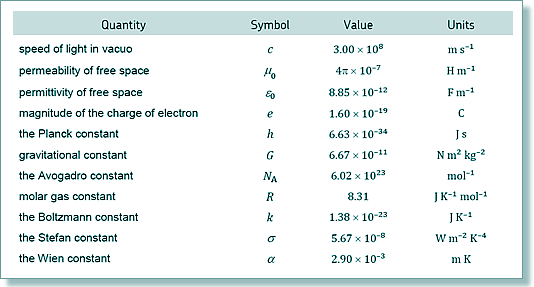Questions on the Photoelectric Effect
Q8.
A clean magnesium surface is supported in a vacuum as the cathode of a photocell.
A wire-mesh electrode surrounds the cathode and is used as the anode.
When the cathode is illuminated with ultraviolet radiation of wavelength 254 nm, the anode current can be reduced to zero by making it negative with respect to the cathode using a potential difference of 1.2V or greater.
Obtain a value for the work function of magnesium in electron-volts.
For photoelectrons:
EK = eVS
Now
hf = φ + EK(MAX)
so
hf = φ + eVS
φ = hf - eVS

φ = (6.63 x 10-34 x 3.00 x 108)/(254 x 10-9) - (1.60 x 10-19 x 1.2)
φ = (7.83 - 1.92) x 10-19
φ = 5.91 x 10-19 J
φ = 5.91 x 10-19 /1.60 x 10-19 eV
φ = 3.69 eV
φ = 3.7 eV 
(Total 4 marks)


